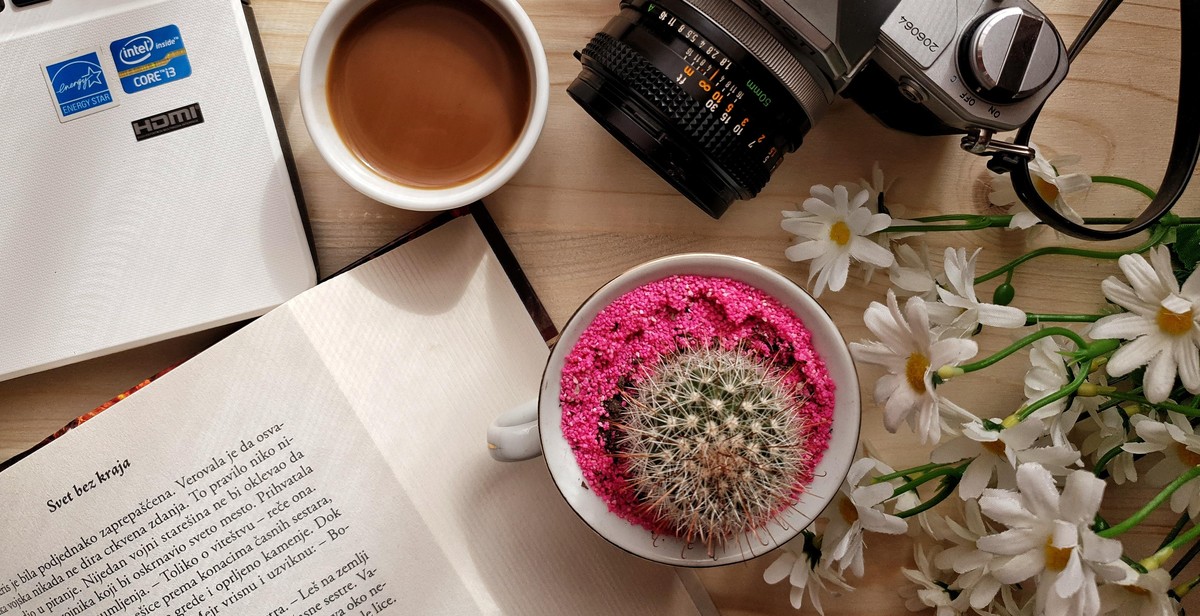How to Care for Air Plants: Tips for Growing and Displaying Tillandsias
Air plants, also known as Tillandsias, are unique and fascinating plants that don’t require soil to grow. Instead, they absorb moisture and nutrients through their leaves. These plants have become increasingly popular in recent years due to their low maintenance and versatility. They can be displayed in a variety of ways, from hanging them in glass terrariums to mounting them on driftwood or stones.
Types of Air Plants
There are over 650 species of Tillandsias, ranging in size from small, delicate plants to larger, more robust varieties. Some of the most popular species include:
- Tillandsia ionantha
- Tillandsia xerographica
- Tillandsia caput-medusae
- Tillandsia stricta
Caring for Air Plants
While air plants are low maintenance, they still require proper care to thrive. Here are some tips for growing and displaying Tillandsias:
- Water: Air plants should be watered once a week by soaking them in water for 30 minutes. After soaking, gently shake off excess water and allow them to dry completely before placing them back in their display.
- Light: Air plants prefer bright, indirect light. Avoid placing them in direct sunlight, as this can cause the leaves to burn.
- Air circulation: Air plants need good air circulation to thrive. Make sure they are not placed in an area with stagnant air.
- Fertilizer: While air plants can survive without fertilizer, they will grow faster and produce more blooms if given a monthly dose of air plant fertilizer.
With proper care, air plants can be a unique and beautiful addition to any home or office. Whether you choose to display them in a terrarium or mount them on a piece of driftwood, these fascinating plants are sure to impress.

What are Air Plants?
Air plants, also known as Tillandsias, are a type of plant that grows without soil. They are epiphytes, meaning they attach themselves to other plants or objects to obtain moisture and nutrients. Unlike traditional plants, air plants do not have roots that absorb water and nutrients from soil. Instead, they have specialized leaves that absorb moisture and nutrients from the air.
Air plants are native to the forests, mountains, and deserts of Central and South America, Mexico, and the southern United States. There are over 650 species of air plants, with a wide range of sizes, shapes, and colors.
Types of Air Plants
There are many types of air plants, each with unique characteristics. Some of the most popular types of air plants include:
- Tillandsia ionantha: This small air plant has bright green leaves that turn red when it blooms. It is one of the most common types of air plants.
- Tillandsia xerographica: This large air plant has thick, silver-colored leaves that curl inward. It is prized for its unique shape and texture.
- Tillandsia bulbosa: This air plant has long, curly leaves that resemble dreadlocks. It is often grown in hanging baskets.
- Tillandsia capitata: This air plant has a round, compact shape and soft, green leaves. It is often used in terrariums and other small displays.
Each type of air plant has its own specific care requirements, so it is important to research the needs of your particular plant to ensure it thrives.
| Type of Air Plant | Size | Growth Rate |
|---|---|---|
| Tillandsia ionantha | 1-3 inches | Slow |
| Tillandsia xerographica | 8-10 inches | Slow |
| Tillandsia bulbosa | 6-8 inches | Moderate |
| Tillandsia capitata | 2-4 inches | Fast |

How to Grow Air Plants
Air plants, also known as Tillandsias, are easy to grow and care for. They do not require soil to grow, but instead absorb moisture and nutrients through their leaves. Here are some tips to help you grow healthy and beautiful air plants:
Light
Air plants need bright, indirect light to thrive. They should be placed near a window with filtered sunlight or under artificial light. Be sure to protect them from direct sunlight as it can burn their leaves.
Watering
Watering air plants is different from watering other plants. They need to be misted or soaked in water once a week. To mist, use a spray bottle to mist the leaves until they are thoroughly wet. To soak, submerge the plant in a bowl of water for 20-30 minutes. After soaking or misting, shake off excess water and allow the plant to dry completely before placing it back in its container.
Temperature and Humidity
Air plants prefer warm temperatures between 50-90°F. They also thrive in high humidity environments. If you live in a dry climate, you can increase the humidity by misting the plant more frequently or placing it on a tray filled with pebbles and water.
Fertilization
Air plants do not need to be fertilized often, but it can help them grow faster and produce more flowers. Use a water-soluble fertilizer once a month during the growing season. Be sure to dilute the fertilizer to half strength and apply it to the leaves rather than the roots.
| Light | Watering | Temperature and Humidity | Fertilization |
|---|---|---|---|
| Bright, indirect light | Mist or soak once a week | 50-90°F, high humidity | Water-soluble fertilizer once a month during growing season |
By following these simple tips, you can grow and display beautiful air plants in your home or office.

Displaying Air Plants
One of the best things about air plants is that they can be displayed in a variety of ways. Here are some popular options:
In a Terrarium
Air plants look stunning in a terrarium, which is a glass container that can be open or closed. Closed terrariums create a humid environment, which is perfect for air plants. To create a terrarium, choose a container with an opening that is large enough to fit your air plants. Add a layer of pebbles or rocks to the bottom of the container for drainage. Then, add a layer of activated charcoal to keep the soil fresh. Finally, add a layer of soil and place your air plants on top. You can also add decorative elements like moss or small figurines to create a miniature garden.
Mounted on Wood or Stones
Another way to display air plants is to mount them on wood or stones. To do this, you can use a glue gun or wire to attach the air plants to the surface. This creates a natural and organic look that is perfect for a bohemian or rustic style. You can also add other decorative elements like shells or crystals to create a unique and personalized display.
In a Hanging Planter
Air plants can also be displayed in a hanging planter, which is a great option if you have limited counter or shelf space. Hanging planters come in a variety of styles, from macrame to geometric shapes. When choosing a hanging planter, make sure it has enough space to accommodate your air plants and that it has good drainage. You can also add decorative elements like beads or tassels to create a stylish and trendy look.
Overall, there are many creative ways to display air plants. Whether you choose to display them in a terrarium, mounted on wood or stones, or in a hanging planter, air plants are sure to add a unique and beautiful touch to your home or office.

Common Problems with Air Plants
While air plants are relatively easy to care for, there are a few common problems that can arise if they are not given the proper attention. Here are some of the most common issues that air plant owners may encounter:
Overwatering
Overwatering is one of the most common problems with air plants. While these plants do require regular watering, they are also susceptible to rot if they are watered too frequently. To avoid overwatering your air plants, make sure to let them dry out completely between waterings. This may mean watering them less frequently than you would other plants, but it is important to give them time to dry out completely before watering again.
Underwatering
Underwatering is another common issue with air plants. These plants do need water to survive, and if they are not watered frequently enough, they can dry out and die. To avoid underwatering your air plants, make sure to water them regularly, especially during hot and dry weather. You can mist them with water or soak them in a bowl of water for a few hours to ensure they get the moisture they need.
Lack of Air Circulation
Air plants require good air circulation to thrive. If they are kept in a closed container or in an area with poor air flow, they may develop mold or other issues. To ensure your air plants get the air circulation they need, make sure to place them in an area with good ventilation. You can also give them a gentle breeze with a fan or by opening a window.
Pests
Like all plants, air plants are susceptible to pests such as mealybugs and spider mites. If you notice any signs of pests on your air plants, it is important to act quickly to prevent them from spreading. You can remove pests by gently wiping them off with a cotton swab dipped in rubbing alcohol. You can also use an insecticidal soap to treat the plants and prevent further infestations.
By addressing these common problems and providing the proper care, you can help your air plants thrive and enjoy their unique beauty for years to come.

Conclusion
Growing and caring for air plants can be a rewarding experience for any plant enthusiast. With the right knowledge and care, these unique plants can thrive and add a touch of natural beauty to any space.
When it comes to caring for air plants, it’s important to remember a few key tips. First, make sure to give your plants plenty of bright, indirect light. Second, water your air plants regularly, but don’t let them sit in standing water. Finally, give your air plants plenty of air circulation to keep them healthy and happy.
When displaying your air plants, the options are endless. From hanging them in a terrarium to mounting them on a piece of driftwood, there are countless ways to showcase these fascinating plants.
Whether you’re a seasoned plant lover or just starting out, air plants are a great addition to any collection. With a little bit of care and attention, these unique plants will thrive and bring a touch of natural beauty to your home or office.
Summary of Tips for Caring for Air Plants:
- Give your air plants plenty of bright, indirect light.
- Water your air plants regularly, but don’t let them sit in standing water.
- Provide your air plants with plenty of air circulation.
